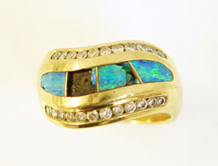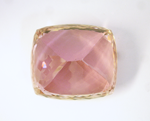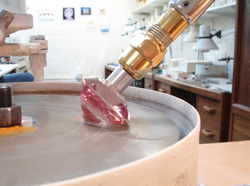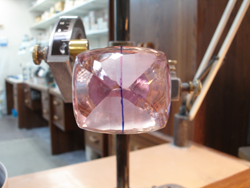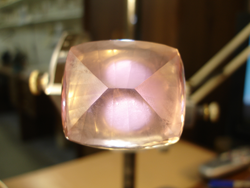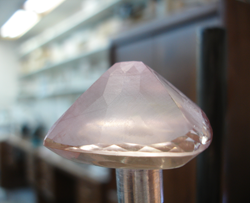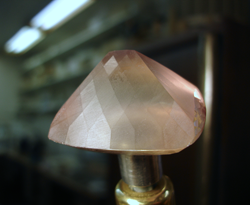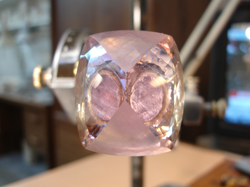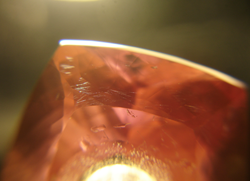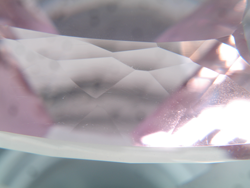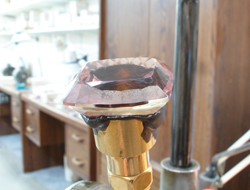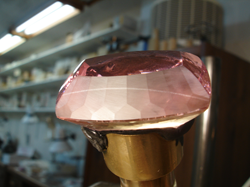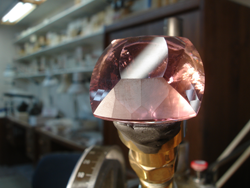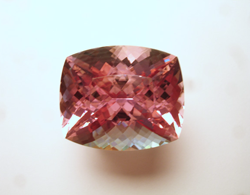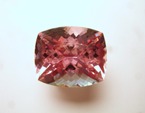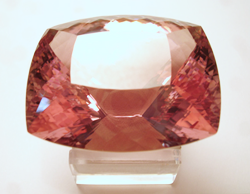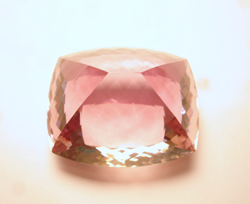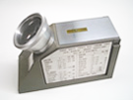I Re-faceted this Kunzite to Close the Window
and Improve its Brilliance
A customer sent me a large 295 carat Kunzite which had been cut in Pakistan. They didn't do too bad a job over there, considering the primitive equipment and methods they use. The customer wanted the stone re-faceted to close the window and make it more brilliant with a symmetrical facet pattern with nice flat facets and a better polish.
I first made her aware of the risks involved in working on Kunzite. Kunzite has perfect cleavage in two directions. Some cutters have had a Kunzite fall in half while they are working on it. After understanding the risk involved, she told me to go ahead and do my best.
See a video of the finished stone near the bottom of this page.

